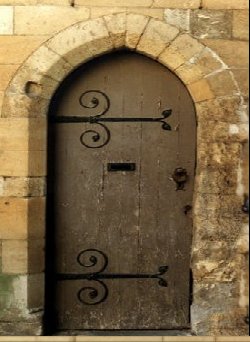|
|
|
|
Doors to the Past |
|
Mr. Cook, a Welchman of scholarly ability, taught at an early day in a house that stood on the present Strengk farm near Blue Sulphur. Miss Ann Howard, who frequently contributed original productions written in verse for local social center gatherings, taught one or more private schools in a house that stood on the McCorkle farm near Howell's Mill. Miss Lou Moore taught for a time in the community school building at Howell's Mill. Edward. Vertigan taught two terms in the neighborhood, the first near Blue Sulphur and the second in a building that stood on the Maupin farm near Bethesda church. James Nouning, a near relative of Mrs. Chapman W. Maupin, taught one term on Poar's Hill in a building that stood at the forks of the road in the present Bradley orchard. That building was used as a school building for a time after the first community building south of the paved road was destroyed by fire. John Simpson, a just but stern disciplinarian, as interpreted in his day, taught for a time on Poar's Hill and later in the community building at Howell's Mill. Just prior to the Civil War, and again after that war when he returned from serving in the Confederate army, Joseph A. Buckner taught several terms in the community. His first school was taught near Bethesda church, and the others in the community building at Howell's Mill. At the latter place he married Olga Handley, followed the vocation of farming as well as teaching, and took an active part in social affairs in the neighborhood for a number of years till he moved to Carroll County, Missouri. During the Civil War, Jonathan Switzer, formerly of Botetourte County, taught in the community building at Howell's Mill. He was a well educated man, a splendid leader in the community, and had the power of making friends of all in his large circle of acquaintances. Among the older citizens in the neighborhood he is still spoken of in terms of highest commendation. In naming these early teachers of the days before the Civil War, all of whom represented the best in social and moral ideals of the day, we should name also the leaders in the community who largely controlled the selection of their teachers. It would be impossible to give a complete list of those who controlled the educational destinies of the youth at that time, but we would beg the privilege of presenting the names of a few ( 14 )
|
